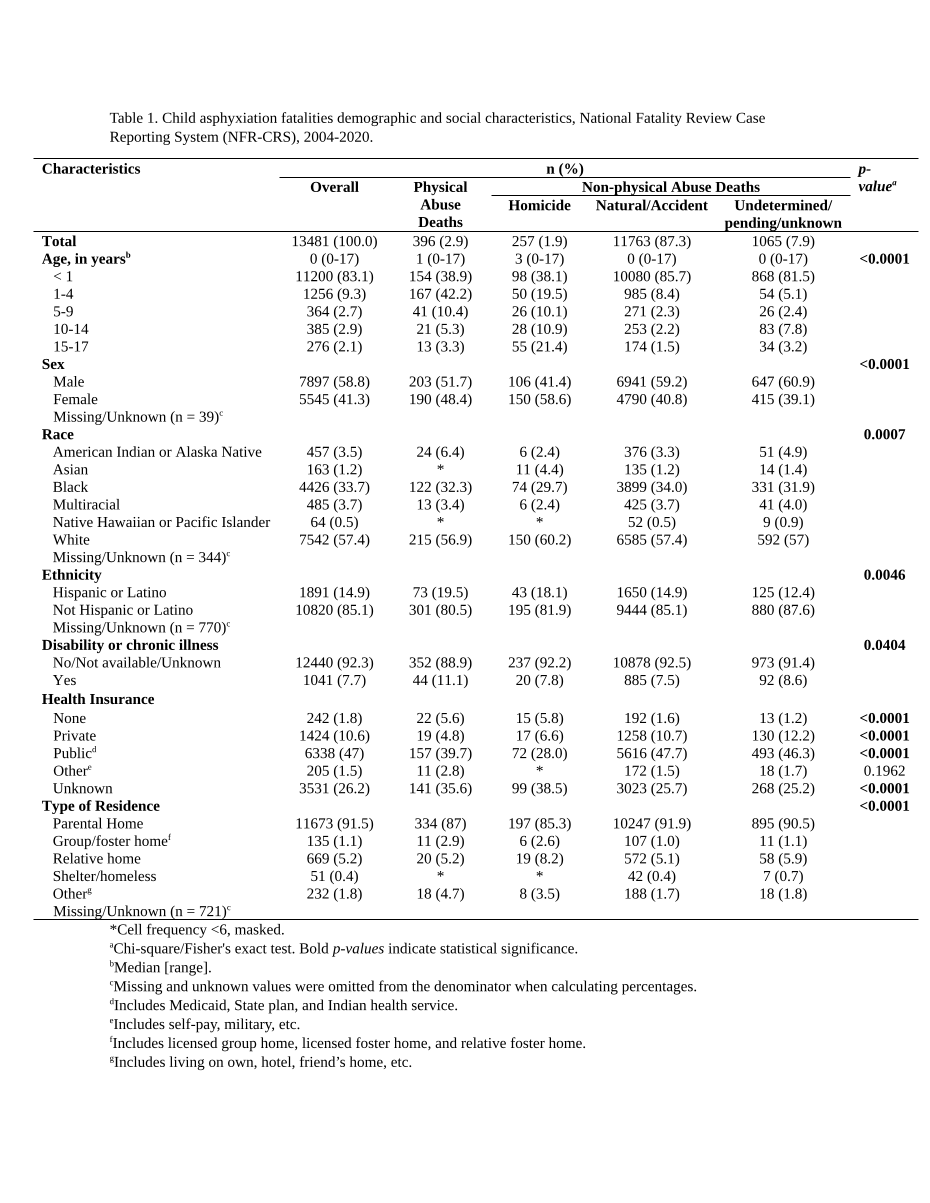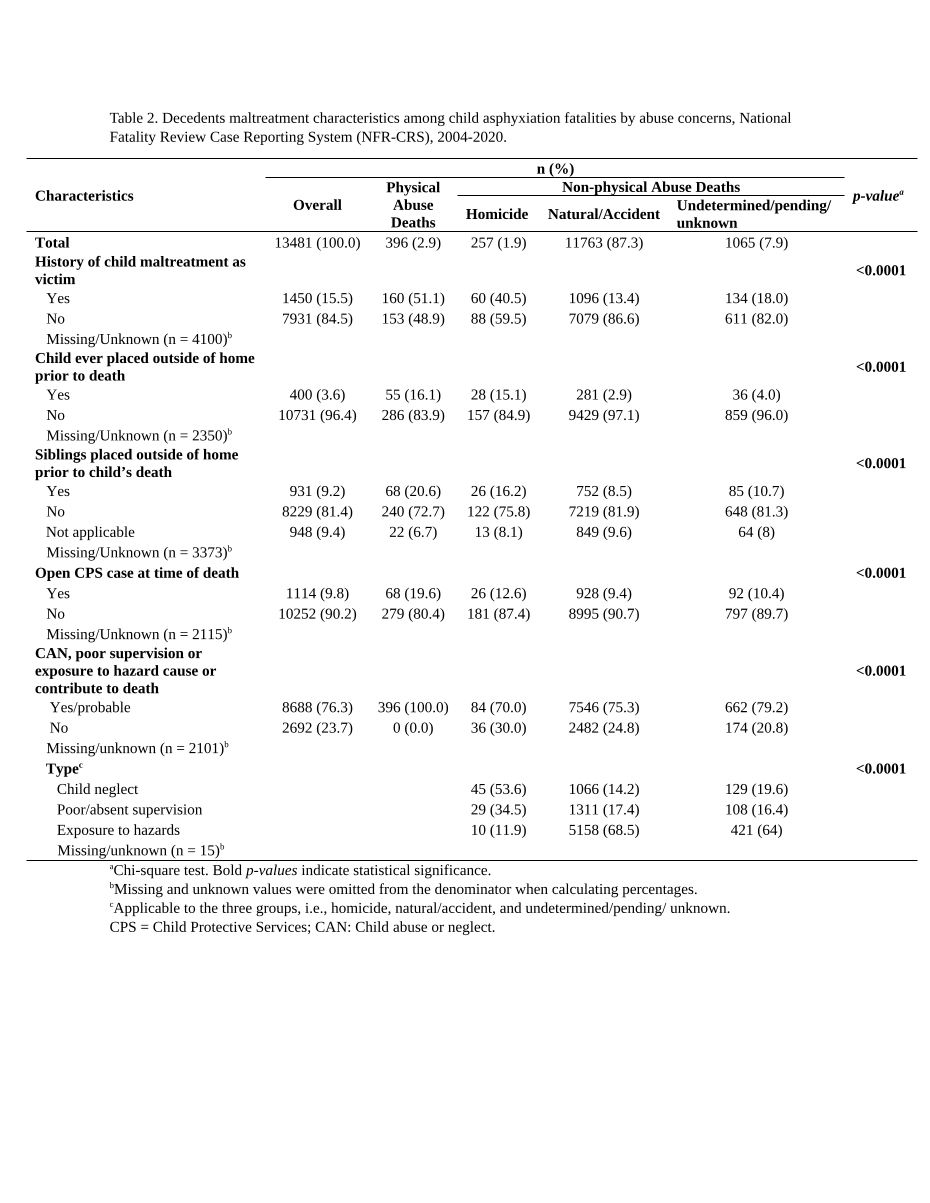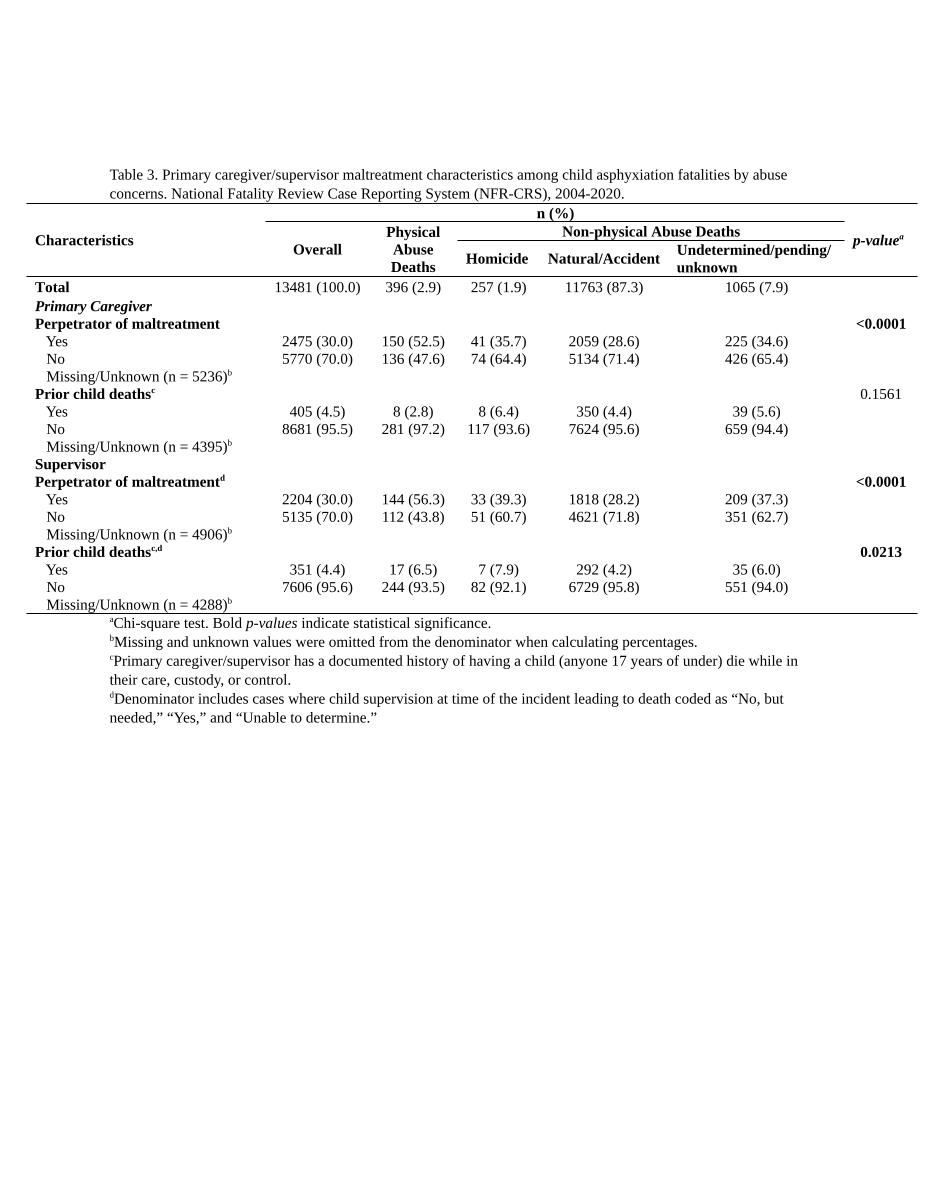Child Abuse & Neglect 1
Session: Child Abuse & Neglect 1
339 - Characterizing Pediatric Abusive Asphyxia Fatalities Utilizing the National Fatality Review-Case Reporting System
Sunday, April 27, 2025
8:30am - 10:45am HST
Publication Number: 339.4403
Amber Hussain, Nationwide Children's Hospital, Canal Winchester, OH, United States; Saroj Bista, Abigail Wexner Research Institute at Nationwide Children’s Hospital, Columbus, OH, United States; Nichole L. Michaels, Nationwide Children's Hospital, Columbus, OH, United States; Farah Brink, Nationwide Children's Hospital, Columbus, OH, United States

Amber Hussain, MD, PGY-5 (she/her/hers)
Child Abuse Pediatrics Fellow Physician
Nationwide Children's Hospital
Canal Winchester, Ohio, United States
Presenting Author(s)
Background: Many studies exist describing child asphyxia fatalities from accidental mechanisms or suicide, yet less is known about child asphyxia deaths due to physical abuse (PA).
Objective: To compare decedent characteristics of abusive and non-abusive asphyxiation fatalities captured within a large national child fatality database.
Design/Methods: We used the National Fatality Review-Case Reporting System (NFR-CRS) to identify youth ages 0-17 years who died from asphyxia from 2004-2020. Cases were identified using key variables such as cause and manner of death, as indicated by the child fatality review teams. Cases of non-asphyxia fatalities and suicide were excluded. We compared decedent, caregiver/supervisor, and incident characteristics of asphyxia deaths from PA to asphyxia deaths by homicide (not PA), accidental or natural, and undetermined/pending/unknown. We described characteristics of primary person responsible for abusive homicide deaths. We used Chi-square/Fisher’s exact tests or Kruskal-Wallis tests with p-values of < 0.05 to determine significance of comparisons between groups.
Results: There were 13,481 cases of asphyxia deaths with 396 (2.9%) due to PA, 257 (1.9%) homicide, 11,763 (87.3%) natural/accident, and 1065 (7.9%) undetermined/pending/unknown. Overall, >90% of deaths were children under 4 years with 83.1% under 1 year of age. Most were male (58.8%), white (57.4%), not Hispanic (85.1%) and almost half had public insurance (47%). Emergency services were not called, and resuscitation was not attempted in a higher proportion of PA and homicide deaths compared to other categories. Strangulation was identified as the primary cause of death in >90% of PA deaths. Physically abused decedents were significantly more likely to have a history of child maltreatment and an open child welfare case at time of death as compared to non-abused decedents. Primary caregivers and supervisors at time of death of abused decedents were more likely to have history as perpetrators of maltreatment. A higher proportion of PA (6.5%) and homicide (7.9%) deaths, compared to natural/accidental (4.2%) and undetermined/pending/unknown (6.0%) cases, involved a supervisor with a known history of a child dying while in their care. The primary person(s) responsible for child asphyxia PA homicide deaths were mostly male (54.3%) and most often identified as the biological parent (59.5%), followed by parent’s partner (20.8%).
Conclusion(s): Several child maltreatment risk factors are associated with PA asphyxia deaths. Knowledge of these factors can assist investigation and prevention efforts of child fatalities secondary to asphyxia.
Table 1. Child asphyxiation fatalities demographic and social characteristics, National Fatality Review Case Reporting System (NFR-CRS), 2004-2020.

Table 2. Decedents maltreatment characteristics among child asphyxiation fatalities by abuse concerns, National Fatality Review Case Reporting System (NFR-CRS), 2004-2020.

Table 3. Primary caregiver/supervisor maltreatment characteristics among child asphyxiation fatalities by abuse concerns. National Fatality Review Case Reporting System (NFR-CRS), 2004-2020.


